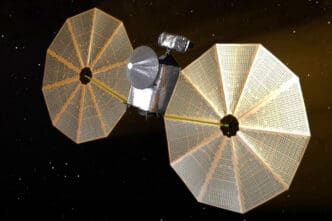As our Sun continues its celestial journey across the cosmos, it is destined to undergo a dramatic transformation in about five billion years. Eventually, the Sun will exhaust its nuclear fuel, causing it to expand into a red giant that may ultimately engulf Earth. These final stages in the life of a star, while signaling an end, can also be moments of great beauty, exemplified by the stunning celestial structure known as the Helix Nebula.
The Helix Nebula, often described as a cosmic eye, stands as a testament to the delicate balance between destruction and creation that defines the universe. Astronomers delve into the mystique of such planetary nebulae by observing various types of electromagnetic radiation. Each wavelength offers unique insights into the physical conditions and processes occurring within these remnants of stellar evolution.
This captivating image of the Helix Nebula is a composite of multiple observations made by several prestigious telescopes. The magenta hues originate from X-ray data captured by NASA’s Chandra X-ray Observatory, providing a glimpse into the high-energy environment around the nebula. Complementing this, optical light data from NASA’s Hubble Space Telescope adds shades of orange and light blue, highlighting the intricate details of the nebula’s structure.
Further enriching the image, the European Southern Observatory’s VISTA telescope contributes infrared data, manifesting as gold and dark blue tones that reveal the cooler, more mature regions of the nebula. Lastly, ultraviolet data from NASA’s Galaxy Evolution Explorer (GALEX) adds a splash of purple, emphasizing energetic processes that continue to shape this astronomical wonder.
Image Credit: X-ray: NASA/CXC/SAO/Univ Mexico/S. Estrada-Dorado et al.; Ultraviolet: NASA/JPL; Optical: NASA/ESA/STScI (M. Meixner)/NRAO (T.A. Rector); Infrared: ESO/VISTA/J. Emerson; Image Processing: NASA/CXC/SAO/K. Arcand







